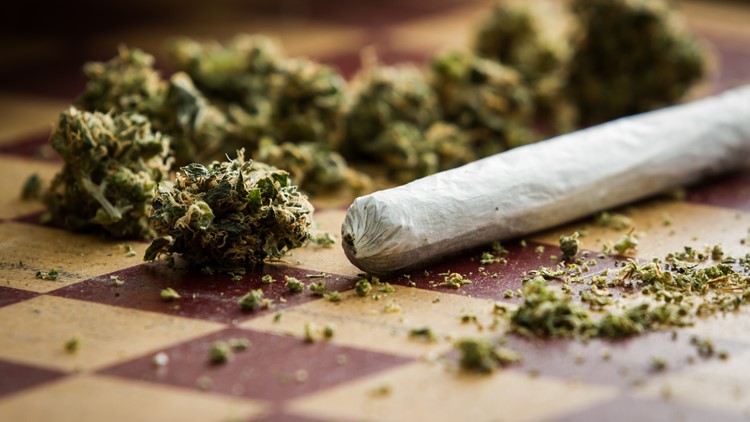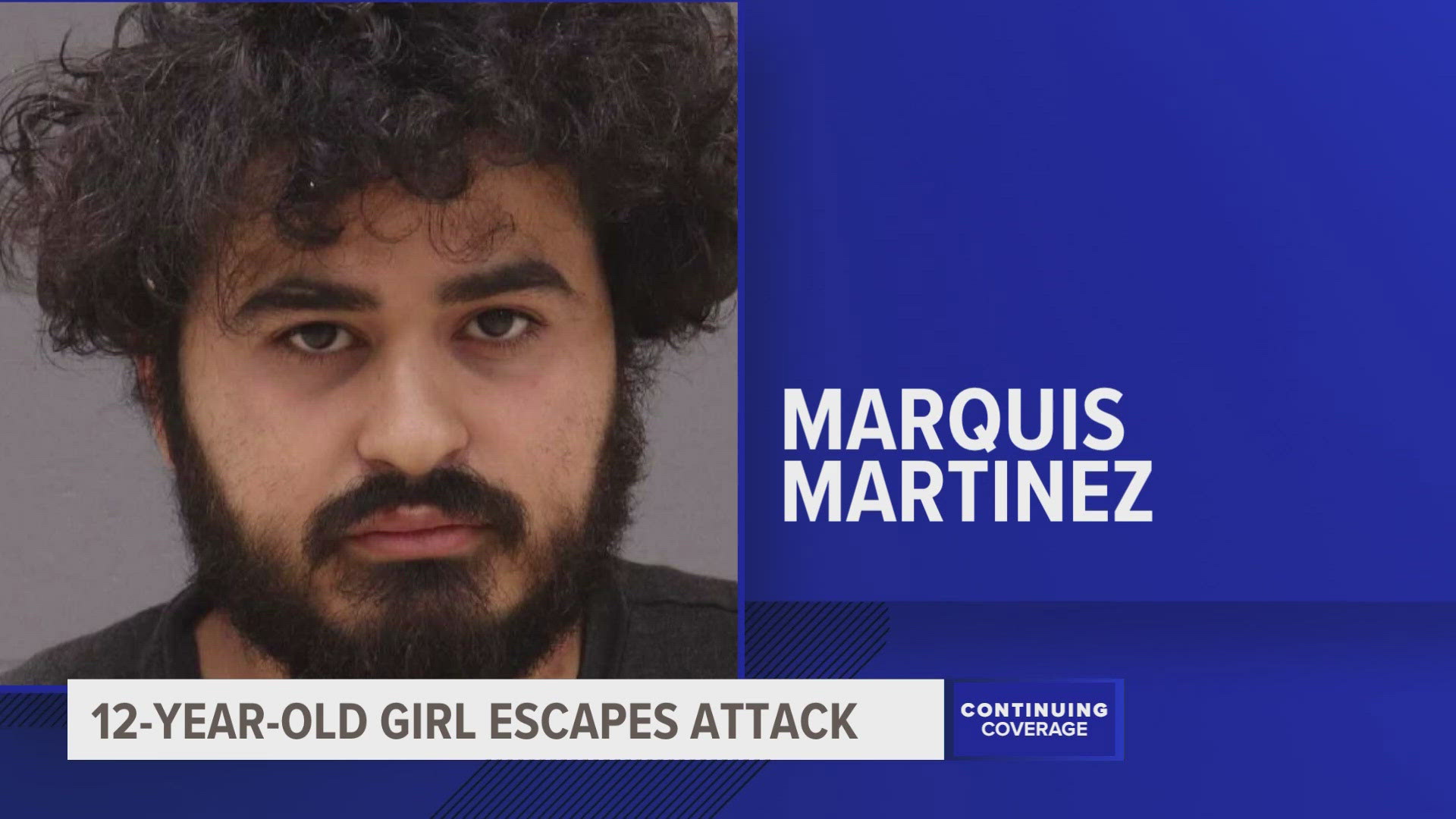GRAND RAPIDS, Mich. — With the largest "marijuana holiday" coming up this Saturday, now is a perfect time to have an honest conversation with your child about marijuana use, its dangers and myths surrounding it.
According to a recent report, 12% of West Michigan students in grades 7, 9 and 11 used marijuana in the past 30 days. That same report also found that 55% of West Michigan students in high school believe smoking marijuana is not risky.
13 ON YOUR SIDE spoke with Vicki Kavanaugh, a prevention manager at Arbor Circle and Talk Sooner spokesperson about marijuana use in children and honest strategies parents can use to prevent use.
13 ON YOUR SIDE used the Center for Disease Control, Talk Sooner and the National Institutes of Health as sources for this article.
The dangers of marijuana use in children
Kavanaugh started the conversation by talking about how much marijuana has changed over the years, becoming much more potent now than it used to be.
"Even in the last 10 years, the strains that are now sold commercially, are much more potent. And then if you add that, to the process of making it into like, something you would put in a vape, or something even more concentrated, like a dab, we're talking THC rates that can be as high as 90%. And we, when you compare that to the marijuana of the 60s, in the 70s, when we were talking like a two to 3% THC rate, I mean, we're talking a lot more potent substance," Kavanaugh explained.
With marijuana more potent now than ever, it is also important to understand all of the new and different forms it comes in. Marijuana is sold in a variety of forms other than the flower (bud), including: Edibles, concentrate, oils and more.
Some of these forms can have considerably higher THC concentrations than the flower.
"When we talk about vaping, or edibles, that's that different way of getting down to that concentrated THC. So you're taking in a lot more of that compound that really it has those the effects that make you high," said Kavanaugh.
The Center for Disease Control and Prevention (CDC) says marijuana use in adolescents is associated with harm to brain health, mental health issues, impaired driving and increased potential for marijuana use disorder.
How to talk to your kids about marijuana
Having an open and honest conversation with your children about marijuana is the best way to discuss the topic.
Kavanaugh suggested that before broaching the subject with your kids, you should arm yourself with facts about the dangers of the drug, including the higher THC rates mentioned above.
Easing into the subject of marijuana use with your child is preferred over a more straight-on approach, according to Kavanaugh.
She suggested a couple of ways to broach the subject:
- Telling your child you just looked up a fact about marijuana on the internet and asking your child if they knew that.
- Asking your child if they ever hear other kids talking about it at school.
Once you broach the subject, you can start asking them what they think and know about marijuana. You can add to this conversation by also sharing what you know about the drug. You can even use this approach to learn about the drug together by doing research online to answer questions.
"We also think it's really important to share your feelings. One of the things that we stress at Talk Sooner is no matter how you feel about marijuana, it is, it is bad for our youth, it really has a negative impact on their brain development. And that's what we're focused on. So really set out your expectations as a parent, and then always being that safe space to come back to," Kavanaugh explained.
You can also share how marijuana is illegal for anyone under 21 and that there are reasons for that. Bring back up brain development as one of the reasons for the law.
Myths about marijuana
When having a conversation about marijuana with your children it can be necessary to dispel myths they may have heard online or from friends.
Some common marijuana myths include:
- Marijuana is the same as it was in the 60s and 70s - This is false, THC levels are now much higher than they were then.
- Consuming marijuana edibles is safer for your brain than smoking marijuana - This is also false, you are still putting THC in your body, which can have negative effects on brain health.
- Marijuana is a natural substance and isn't harmful - This is false, marijuana is often engineered to be more potent. Plus smoking marijuana is bad for your lungs.
- Marijuana isn't addictive - False, marijuana affects dopamine receptors in the brain and can cause addiction.
- Vaping marijuana is safer than smoking it - While it may be slightly better for your lungs, often times vapes have higher concentrations of THC which can have adverse effects on brain health and development.
Warning signs that your child might be using marijuana
If you are concerned that your child has already started using marijuana, you can keep an eye out for some warning signs.
"When you see those big changes in behavior. If they're social and they become withdrawn, if they're not interested in the activities that they used to be, if they're sleeping a lot, if they're spending a lot of time in their rooms alone, you know, maybe on their, their video games, or whatever. And that's not normal, if their grades are going down, things like that, those big changes in behavior. And you can look for though, you know, the glassy eyes. Marijuana now has such a bad smell, so that would be hard to miss. Even in vaping, it's still gonna have an odor," Kavanaugh said.
If you are able to identify some of these warning signs it would be a good way to broach the subject with your child. Ask them what is going on first, don't immediately jump to the consequences, Kavanaugh recommends. After you have established a dialogue, then you can work on consequences.
Resources for how to talk about marijuana with your children
There are a variety of ways you can learn more about marijuana, its effects and how to talk to your children about it. First, we will recommend Talk Sooner, a local resource that provides tips on how to talk your children about marijuana use as well as alcohol and other drugs. The website also provides facts about drugs and other information that may be helpful.
The CDC also provides information about marijuana use in adolescences on their website. You will also be able to find several other links to resources recommended by the CDC.
►Make it easy to keep up to date with more stories like this. Download the 13 ON YOUR SIDE app now.
Have a news tip? Email news@13onyourside.com, visit our Facebook page or Twitter. Subscribe to our YouTube channel.
Watch 13 ON YOUR SIDE for free on Roku, Amazon Fire TV Stick, Apple TV and on your phone.



